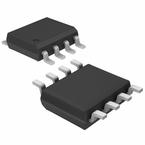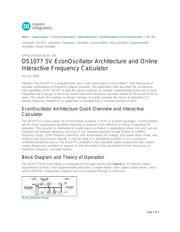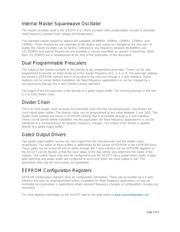下载

Maxim > Design Support > Technical Documents > Application Notes > Oscillators/Delay Lines/Timers/Counters > APP 185
Keywords: DS1077, calculator, frequency calculator, econoscillator, clock oscillator, programmable
oscillator, crystal oscillator
APPLICATION NOTE 185
DS1077 5V EconOscillator Architecture and Online
Interactive Frequency Calculator
Apr 11, 2002
Abstract: The DS1077 is a programmable (via 2-wire) dual-output EconOscillator™ with thousands of
possible combinations of frequency outputs available. This application note describes the architecture
and capabilities of the DS1077 to give the design engineer an intuitive understanding of the part to ease
integration into a design. A link to an online interactive frequency calculator (based on Microsoft Excel) is
given. This allows the engineer or design manager to quickly evaluate the device to determine if a
specific frequency needed for an application is possible with a minimum amount of effort.
EconOscillator Architecture Quick Overview and Interactive
Calculator
The DS1077 is a dual-output, 5V EconOscillator available in 8-SO or 8-µSOP packages. EconOscillators
are all-silicon squarewave oscillators requiring no external clock reference or timing components for
operation. They provide an alternative to crystal-based oscillators in applications where size and cost are
important but absolute frequency accuracy is not. Important features include 8.2kHz to 133MHz
frequency range, 1.25% frequency tolerance over temperature and voltage, 5µA power-down mode, and
single or dual synchronous outputs. It may be used as a standalone oscillator or as a processor-
controlled peripheral device. The DS1077 is available in four standard master frequencies with custom
master frequencies available on request. A brief description of the architecture of the device and an
interactive frequency calculator follows.
Block Diagram and Theory of Operation
The DS1077 5V EconOscillator is comprised of five major blocks (see Figure 1): An internal master
squarewave oscillator, dual-programmable prescalers, a single divider chain, gated output drivers, and a
set of EEPROM configuration registers that are accessible through a 2-wire bus.
More Detailed Image
Page 1 of 3





